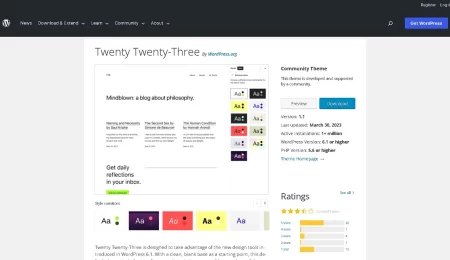Learning HTML – Best possible ways of practicing & understanding
Learning HTML (Hypertext Markup Language) is a coding language used to create web pages. It is one of the core technologies used to build the internet, and every website you see on the internet has been created using HTML. It is the foundation of web development, and it is essential for anyone interested in web development to have a good understanding of HTML.
Learning HTML can seem daunting, especially for beginners, but there are many resources available to make the process easier. In this article, we will discuss the best possible ways of learning and understanding HTML.
- Start with the Basics
Before diving into complex HTML concepts, it is important to start with the basics. The basics of HTML include understanding the structure of an HTML document, the use of HTML tags, and how to create a web page using HTML. Once you have a solid understanding of the basics, you can move on to more advanced topics.
- Use Online Resources
There are many online resources available to learn HTML. Websites like W3Schools, Codecademy, and Udemy offer free and paid courses on HTML. These courses are designed for beginners and cover all the necessary topics to get started with HTML. They include interactive exercises, quizzes, and assignments that make learning HTML fun and engaging.
- Learn from Experts
Attending workshops, seminars, and conferences conducted by experts in the field can help you learn HTML quickly. These experts can provide you with tips and tricks that are not available online. They can also provide you with feedback on your HTML code and help you improve your skills.
- Practice, Practice, Practice
Practice is essential when it comes to learning HTML. The more you practice, the better you will become. Create a personal project and try to implement different HTML concepts in it. Practice writing HTML code from scratch, and try to replicate web pages that you like.
- Build Projects
Building projects is the best way to apply what you have learned in HTML. It is also a great way to showcase your skills to potential employers. Build projects that are relevant to your interests, and try to implement different HTML concepts in them.
- Get Feedback
Getting feedback on your HTML code is crucial to improving your skills. Join online communities, such as Reddit and Stack Overflow, and post your HTML code for feedback. These communities are filled with experts who can help you identify areas of improvement in your HTML code.
- Read HTML Documentation
HTML documentation is a great resource for learning HTML. The documentation provides a detailed explanation of HTML tags and how they should be used. It also provides examples of HTML code and how it should be structured.
- Use HTML Editors
HTML editors are software tools that help you write HTML code. They provide features like syntax highlighting, auto-completion, and error checking that make writing HTML code easier. Popular HTML editors include Notepad++, Atom, and Sublime Text.
- Collaborate with Others
Collaborating with others is a great way to learn HTML. Join online communities, such as GitHub and Bitbucket, and contribute to open-source HTML projects. Collaborating with others can help you learn new HTML concepts, and it can also help you build your portfolio.
- Stay Up-to-Date with HTML Standards
HTML standards are constantly changing, and it is important to stay up-to-date with the latest standards. Subscribe to HTML newsletters, follow HTML blogs, and attend HTML conferences to stay up-to-date with the latest HTML standards.
Conclusion
In conclusion, learning and understanding HTML can be a challenging but rewarding experience for individuals who wish to create and design their own websites or pursue a career in web development. By following the best possible ways outlined in this article, individuals can acquire a solid foundation in HTML, learn about its key concepts and features, and develop the necessary skills to design and create their own web pages.
Remember that learning HTML takes time and practice, but with dedication and persistence, anyone can become proficient in this essential programming language. By staying up to date with the latest web development trends and practices, individuals can continue to improve their skills and knowledge, and create innovative and engaging websites that meet the needs of their audience.
Whether you are a beginner or an experienced web developer, the key to success in learning HTML is to start with the basics, build your skills gradually, and never stop learning. With the right resources, guidance, and mindset, anyone can master this essential programming language and unlock a world of possibilities in web development.
Other Ways:
Online tutorials: There are numerous online tutorials that offer interactive classes and activities to help you learn HTML, including W3Schools, Codecademy, and Khan Academy. These tutorials typically begin with the fundamentals and progressively advance from there.
Books: A thorough introduction to HTML and web development is provided in a number of books that are readily accessible. The titles “HTML and CSS: Design and Build Websites” by Jon Duckett and “Head First HTML and CSS” by Elisabeth Freeman are examples of some well-liked works.
Video courses: There are numerous video courses that cover HTML and web development that are accessible on websites like Udemy, Coursera, and YouTube. These programmes offer a deeper grasp of the topic and are typically taught by seasoned web developers.
Practice: The best way to learn and understand HTML is to practice writing code. Start with small projects and gradually increase the complexity of your projects as you learn more.
Join online communities: Joining online communities such as forums, social media groups, or slack channels dedicated to web development can help you connect with other developers and get help when you need it.
Utilize developer tools: The majority of web browsers have developer tools that let you view and modify a website’s HTML and CSS. Explore and learn about the construction of various webpages using these tools.
Use a code editor: To create and evaluate your HTML code, use a code editor like Sublime Text, Atom, or Visual Studio Code.
Continue learning: Because web development is a constantly changing area, it’s important to keep learning new things and upgrading your knowledge.
Remember that learning HTML takes time and practice, and it’s important to be patient with yourself and keep pushing through challenges. With consistent effort and practice, you can become proficient in HTML and start building your own websites.



Leave a Comment